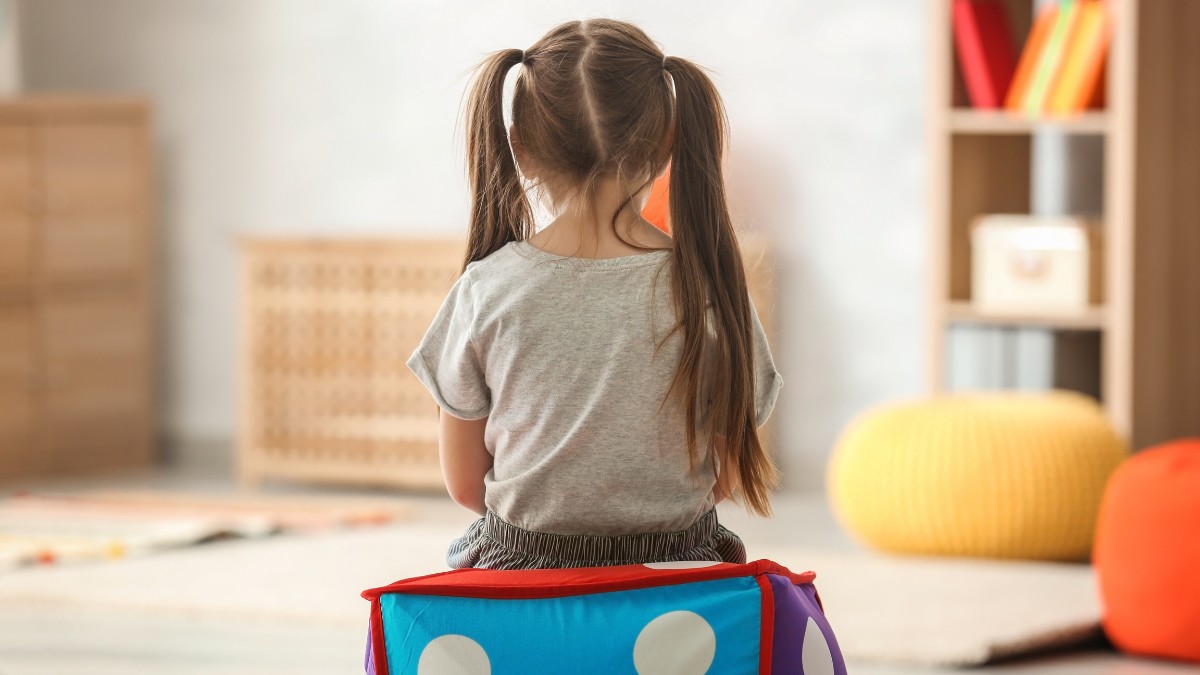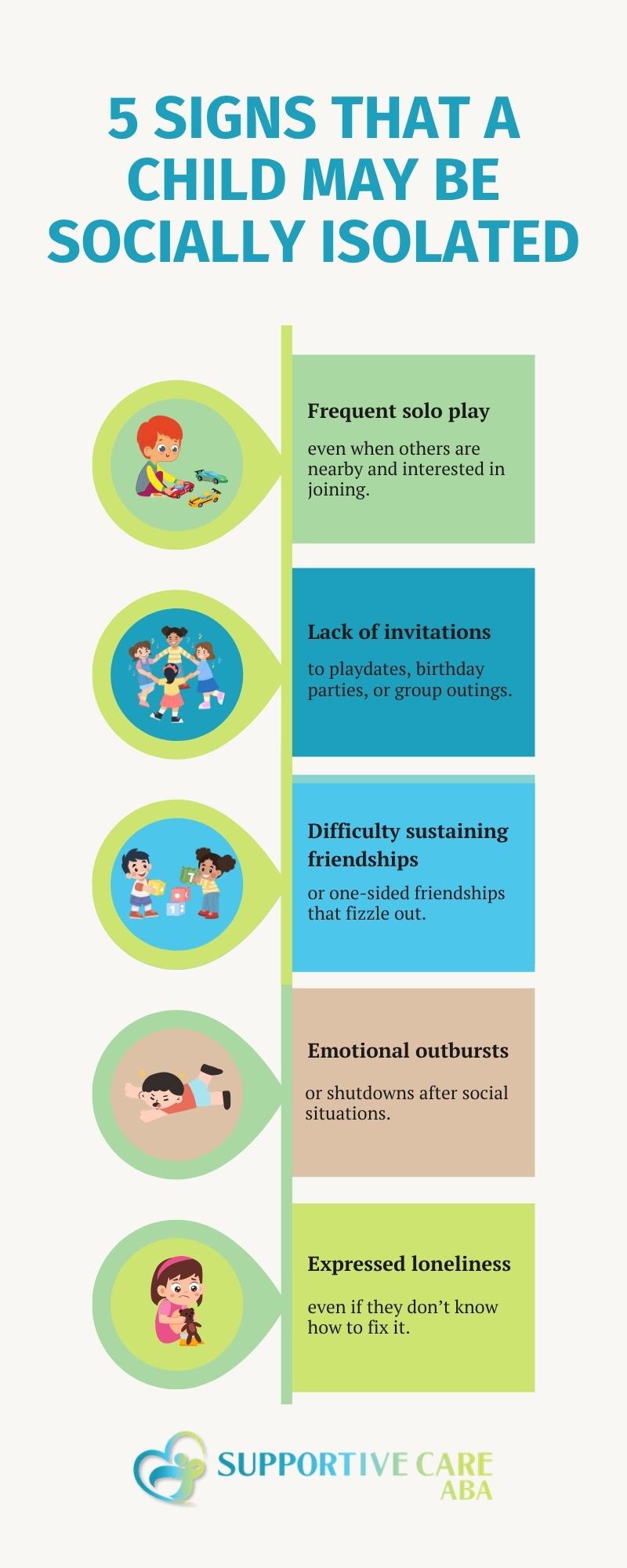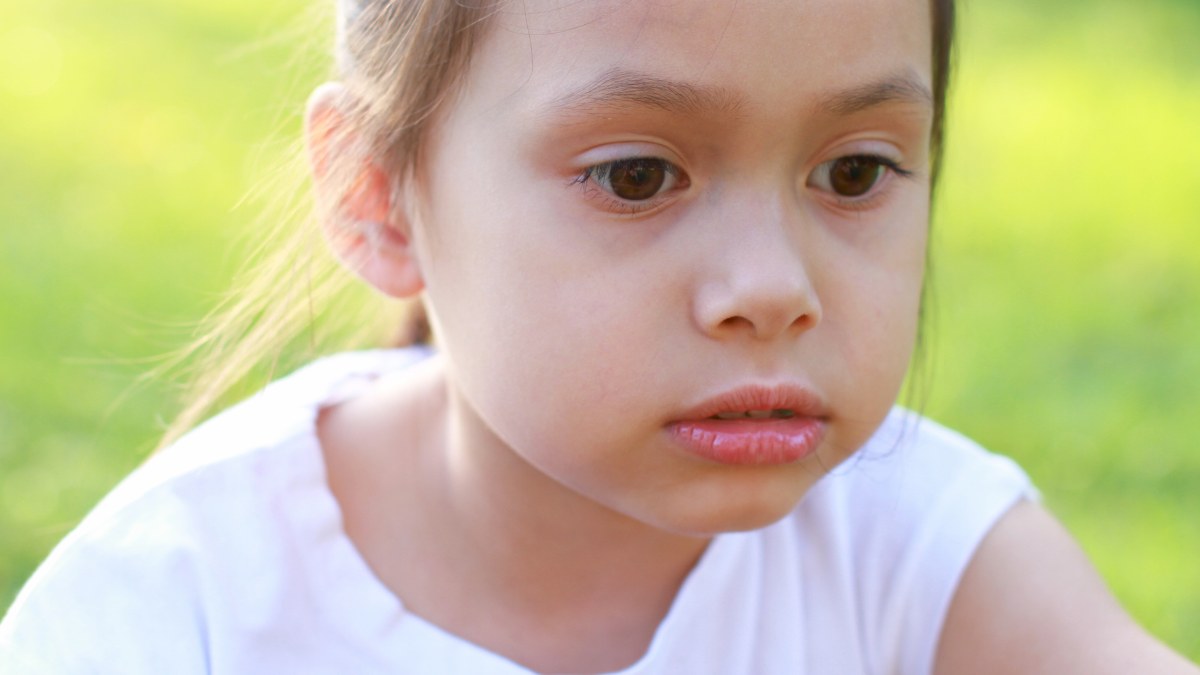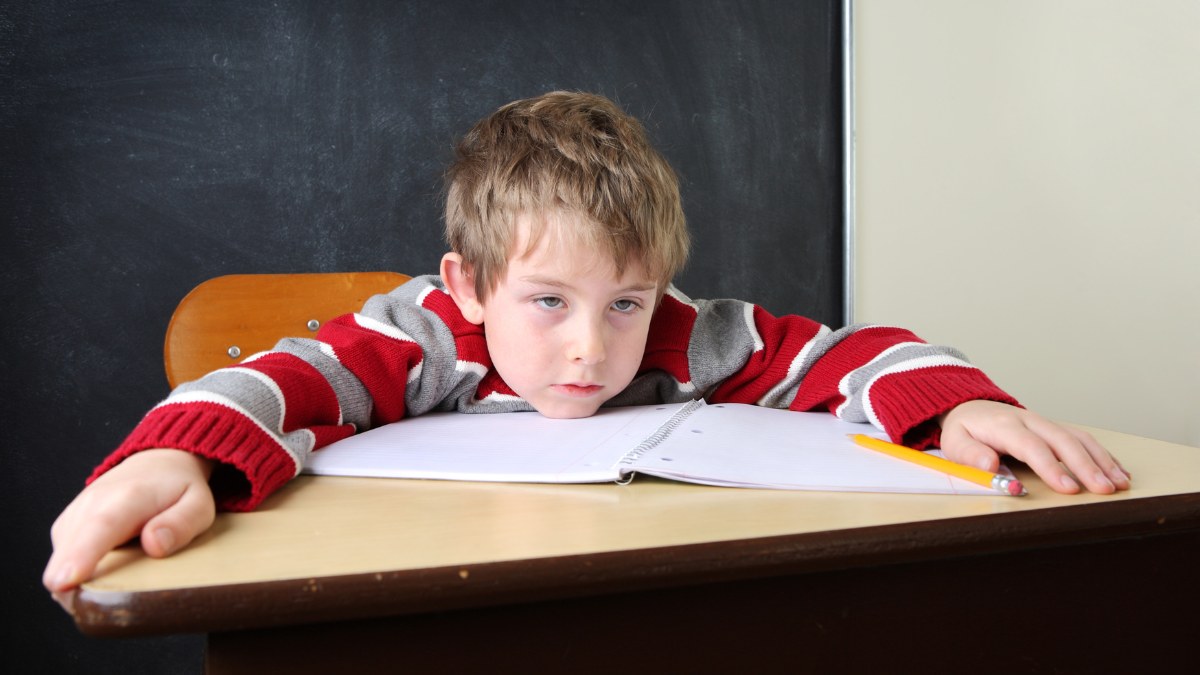Social Isolation in Autism (And How to Break the Cycle)
Social isolation autism challenges many families—learn why it happens, how it affects children, and practical steps to break the cycle of disconnection.

Social Isolation in Autism (And How to Break the Cycle)
Key Points:
- Social isolation in autism is often rooted in communication barriers, sensory sensitivities, and misunderstandings from peers.
- Breaking the cycle requires intentional support—through structured skill-building, inclusive environments, and emotional coaching.
- ABA therapy can provide targeted strategies to promote meaningful connections and reduce isolation.
For many individuals on the autism spectrum, navigating social interactions can be confusing, overwhelming, and at times, disheartening. Social isolation in autism is not simply about being alone—it’s often about feeling alone, even in a crowd. Despite wanting connection, some autistic children and teens find themselves repeatedly excluded, misunderstood, or unable to bridge the gap between their intentions and others’ expectations.
This cycle can start early in childhood and ripple into adolescence and adulthood if not addressed with understanding and effective support. But isolation doesn’t have to be permanent. With the right strategies, environments, and interventions like ABA therapy, families can help their children build authentic connections—and break the cycle for good.
Why Social Isolation Happens in Autism
Before we dive into solutions, it’s essential to understand why social isolation in autism is so prevalent. It's not because individuals on the spectrum lack the desire to connect. Many want friendships and companionship—but face barriers that make socializing feel like an uphill battle.
Some of the most common reasons include:
- Differences in communication: Whether verbal or nonverbal, communication style plays a huge role in social engagement. Subtle facial expressions, body language, sarcasm, or turn-taking can all be challenging to interpret or respond to.
- Sensory sensitivities: Crowded lunchrooms, noisy playgrounds, or even group birthday parties can be sensory minefields. Overstimulation often leads to avoidance—not from disinterest, but from discomfort.
- Rigid thinking or play styles: Some autistic children may prefer predictable routines or specific interests, making flexible social play or spontaneous peer interactions difficult.
- Peer rejection or bullying: Sadly, differences are sometimes met with exclusion. A lack of peer understanding can lead to social rejection, which reinforces withdrawal.
Understanding these root causes is crucial. If we approach social difficulties as skill deficits or environmental mismatches rather than personality flaws, we can begin building solutions that work.
5 Signs That a Child May Be Socially Isolated
It’s not always obvious when a child is experiencing social isolation—especially when they appear content playing alone. But it’s worth watching for patterns, especially over time. These indicators can offer clues:

Parents may notice their child spending recess walking the perimeter of the playground or becoming increasingly reliant on adults for social interaction. Teachers might mention that a student is withdrawn or struggles to “fit in.” All of these can signal social isolation in autism.
Breaking the Cycle: Practical Steps for Parents and Caregivers
The good news? Social skills can be taught, practiced, and nurtured—especially when we start early and stay consistent. Breaking the cycle of social isolation doesn’t mean forcing neurotypical norms. It means giving autistic individuals the tools, opportunities, and environments they need to connect in their own way.
Here’s how families and caregivers can start:
1. Build Social Skills Through Intentional Teaching
Not all children “pick up” social skills through observation. Many autistic kids benefit from direct, explicit instruction.
- Use social stories to teach concepts like greetings, turn-taking, and asking to join a group.
- Practice role-playing common social scenarios—at home, during car rides, or before playdates.
- Teach emotional literacy (e.g., identifying feelings in oneself and others) using pictures, books, and modeling.
These lessons can be part of an ABA therapy plan, where goals are tailored to each child’s needs and preferences.
2. Create Low-Pressure Social Opportunities
Large-group activities can be overwhelming. Start small and build gradually.
- Schedule one-on-one playdates with a peer who shares a common interest.
- Enroll in interest-based groups (like LEGO club, nature walks, or art classes) that reduce the pressure to "be social" while still offering shared experiences.
- Use structured games that have clear rules and turns, which reduce ambiguity and make interactions more manageable.
Small wins here can snowball into increased confidence over time.
3. Coach Peer Interactions in Real-Time
When possible, be present during peer interactions—not to control, but to support.
- Gently guide problem-solving when misunderstandings arise.
- Offer cues (visual or verbal) when your child needs help initiating or exiting a conversation.
- Praise specific behaviors like sharing a toy or making eye contact, even briefly.
This is where the support of professionals—like an ABA therapist from Supportive Care ABA—can be incredibly impactful. They can model and reinforce these skills in structured, naturalistic ways.
4. Advocate for Inclusion at School
School is often where social isolation becomes most visible. But with the right collaboration, it doesn’t have to stay that way.
- Request social goals in your child’s IEP or 504 Plan that promote peer engagement.
- Ask about lunch bunch groups, peer buddy programs, or supported recess.
- Work with teachers to help classmates understand neurodiversity in age-appropriate ways.
When schools become allies, children feel safer—and more included.
What Role Does ABA Therapy Play?
Applied Behavior Analysis (ABA) is often associated with reducing challenging behaviors, but that’s only part of the story. A high-quality ABA therapy program focuses just as much on building up positive behaviors—like communication, flexibility, and yes, social engagement.
Here’s how ABA therapy helps address social isolation in autism:
- Tailored social skills programs: Therapists work one-on-one to teach skills like initiating play, maintaining conversations, or recognizing social cues.
- Generalization support: Skills are practiced not just in sessions but in real-life settings—playgrounds, classrooms, and community outings.
- Family collaboration: Parents are trained to support social goals at home, reinforcing progress throughout the week.
- Peer pairing opportunities: Some ABA providers offer group sessions or peer-matching programs for guided interaction.
When done right, ABA becomes more than a therapy—it becomes a bridge between a child’s internal world and the wider social landscape.
Helping Children Reconnect: What Parents Can Do Today
If your child is already showing signs of social withdrawal, don’t panic. Isolation can be reversed—but it requires intention and support.
Here are immediate steps you can take:
- Observe and take notes. Track when and where your child appears most isolated or anxious. Are there common triggers or patterns?
- Open a conversation. Even if your child is minimally verbal, use visuals or checklists to talk about friends, feelings, and social situations.
- Find your village. Connect with local autism support groups, parent networks, or therapists who understand your child’s needs.
- Start small and build momentum. Don’t push large group events right away. Celebrate small progress like a smile, a wave, or a brief interaction.
- Partner with professionals. Early intervention, especially through a well-structured ABA therapy program, can make a meaningful difference.
Final Thoughts: ABA Therapy as a Path to Connection
At its core, social isolation in autism is not about lack of desire—it’s about lack of access. When we give autistic children the tools to communicate, the space to express themselves, and the support to navigate challenges, the results are powerful.
If you’re a parent wondering how to begin breaking the cycle of isolation, consider working with a provider like Supportive Care ABA. Our compassionate therapists specialize in helping children build social connections in ways that feel natural and empowering.
We offer high-quality ABA therapy in Virginia, Indiana, Georgia, Oklahoma, and North Carolina. Let’s take that first step together—toward belonging, toward confidence, and toward meaningful friendships.
Contact us today to learn more about how we can support your child’s journey out of isolation—and into connection.








.jpg)
.jpg)


%20(1).jpg)
.jpg)
